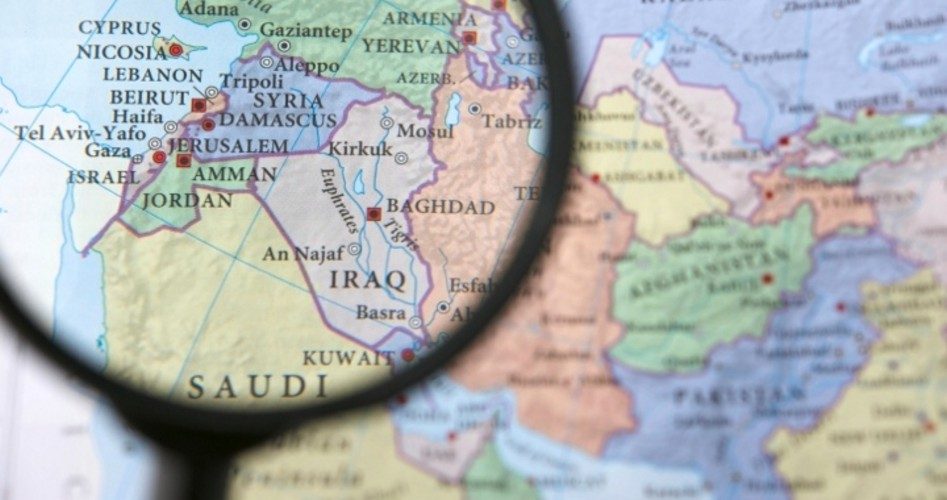
An Obama administration official who remained anonymous told CNN on October 31 that a large explosion the night before at a military base near the village of Snawbar, Syria, 10 miles south of the Mediterranean port city of Latakia, was the result of an attack by Israeli warplanes. The base reportedly housed Russian-made S-125 surface-to-air missiles.
The official cited by CNN said that the attack targeted missiles and related equipment the Israelis “felt” might be transferred to Hezbollah — the Islamic military and political organization based in Lebanon. Hezbollah has sided with the Assad government in the Syrian civil war.
An AFP report carried by the Christian Science Monitor said that the Israeli government has declined comment on its suspected role in the attack. AFP noted that after an early-July Israeli attack on another base north of Latakia, it was learned that the targeted supply of Russian-made P-800 Onik (also known as Onyx or Yakhont) anti-ship cruise missiles had not been destroyed by the strike. This raised speculation that a follow-up strike would occur. Israel regards the P-800 missiles as a threat to its naval vessels.
AFB cited a post on the Latakia News Network, a Facebook page that supports the Assad government, that said the base had been struck by a missile fired from the sea that had caused “limited casualties and damage.”
If it is confirmed that Israel was responsible for the explosion at the Snawbar base, it would be the fifth such attack since January. AFP reports that previous Israeli air strikes reportedly targeted SA-17 anti-aircraft missiles, Iranian-manufactured Fateh 110 surface-to-surface missiles, and military bases belonging to the Syrian army’s 4th Armored Division.
Israel’s Yedioth Ahronoth newspaper observed in a report that the leak from the Obama administration official to CNN indicated a deep divide between Washington and Jerusalem.
“Officials in Washington say that the timing of the strike was not good, to say the least, because yesterday Assad had kept his commitment and enabled the chemical weapons installations to be dismantled,” said the report, which was quoted by the Australian.
An article in Britain’s Telegraph for October 31 reported on developments related to Syria’s fulfillment of the Russian-proposed deal, under which it must declare details of its chemical weapons program and destroy its store of such weapons.
The Telegraph reported that chemical weapons inspectors had confirmed that the Assad regime had destroyed all its equipment for making chemical weapons, citing a statement by the Organisation for the Prohibition of Chemical Weapons: “Syria has completed the functional destruction of critical equipment for all of its declared chemical weapons production facilities and mixing/filling plants, rendering them inoperable.” The target date for this phase of the operation was November 1.
Syria met the deadline for the first phase of the program in late September, a requirement that it make a full declaration of its chemical weapons program. The final phase of the agreement will be the destruction of the chemical agents, set to be completed by next summer.
Syria has declared about 1,000 tons of the most serious chemical agents such as sarin, which are now under tamper-proof OPCW (Organisation for the Prohibition of Chemical Weapons) seals.
As noted previously, some observers in the United States and elsewhere are concerned that the Israeli strikes will irritate Assad and hamper the efforts of Russia and the West to arrange a settlement of the Syrian chemical weapons program satisfactory to all parties.
The Jerusalem Post reported that satellite images of the area that was attacked obtained by Israel’s Channel 2 showed Russian-made Neva missiles at the Syrian base. The images also showed an SA-3 missile battery that included a command center with radar to track the missiles’ targets as well as antennae to track the missiles as they are launched.
The Post also cited a Lebanese media report that six Israel Air Force planes flew over Ayta ash Shab, Bint Jbeil and Marjayoun in southern Lebanon overnight.
Also cited in the Post report was a report last week in the Kuwait newspaper Al-Jarida stating that Israeli Air Force planes had destroyed a shipment of missiles en route to Hezbollah near the Lebanese-Syrian border.
Al-Jarida quoted a senior Israeli official as its source. The report did not specify whether the attack took place on Lebanese or Syrian territory.
Al Arabiya, a Saudi-owned pan-Ara television news channel, reported today:
The bombing targeted a shipment of surface-to-air missiles (SAM) that was headed for Hezbollah in Lebanon, the [U.S.] sources said.
The Britain-based Syrian Observatory for Human Rights reported that a series of explosions took place on Wednesday in near Latakia, the stronghold of Syrian President Bashar al-Assad.
“Several explosions were heard in an air defense base in the Snubar Jableh area,” said Observatory director Rami Abdel Rahman.
He said the cause of the explosions is “unclear” and that no casualties have been reported.
Israel has remained tight-lipped about the issue, but it is not uncommon for Israel’s military to launch attacks inside Syria against weapons shipments being transferred to Hezbollah.
Israel is undoubtedly in a precarious position, surrounded by enemies sworn to its destruction. It also finds itself in a difficult situation politically, because its enemies tend to embed themselves in neighboring countries, giving Israel the choice of violating the territorial sovereignty of its neighbors or standing by waiting for militant terrorist organizations to marshal their resources. It has also found itself to be overly dependent on U.S. aid, when the United States has proved to be an unreliable ally by also aiding unfriendly nations in the region.
One thing is fairly certain, however: As with the many other conflicts in the Middle East, the Israeli–Palestinian conflict is one best left to the concerned parties to work out, without U.S. involvement.



